
Garden pump - tips on maintenance, winter storage and co.
In this article, we explain how to properly maintain, clean and connect your pump.
Do you want to benefit from all
Einhell advantages?
Whether for watering the garden, drainage or domestic water supply - Einhell offers you a wide range of water pumps with associated accessories. Find the right water pump for your garden and home projects now. So you will always have the right pump ready for any type of job and every challenge!
Traditional garden pumps, submersible pumps for clear or dirty water, or pumps for domestic water supply? Depending on the project you have in mind, different types of water pump will fit your requirements. To help you find the right water pump for any application, we have put together an overview of the different types of water pumps.
Ideal for watering lawns and flower beds. The garden pump is ideal for using water reserves from wells or cisterns. With the battery-powered versions, annoying cables become a thing of the past and you can be completely independent of power outlets thanks to Power X-Change batteries. Depending on the model, ECO and BOOST modes allow you to smoothly switch between energy-saving and full-power modes. This way you can adjust the irrigation exactly to your water needs. High-quality inlet and pressure connections as well as sturdy pump housings ensure that you can enjoy your garden pump for a long time. Incidentally, our automatic domestic water works can be used both in the house and as automatic garden pumps!

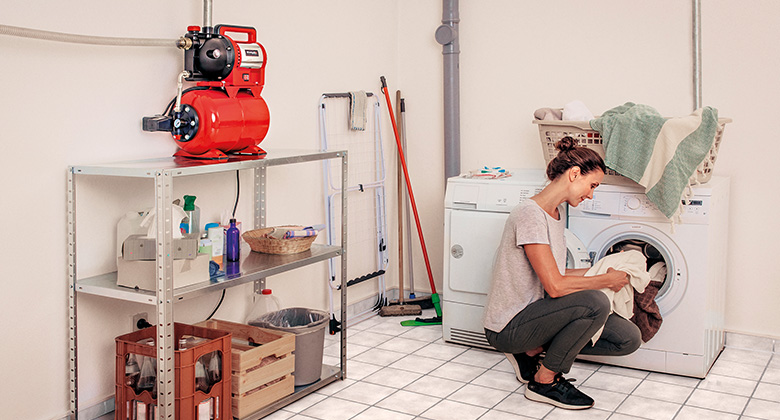
Non-potable water for the whole house. With a domestic water system or an automatic domestic water pump, you can pump clean water for use around the home and for watering the garden from reservoirs such as wells, boreholes and cisterns. If your house has a separate piping system, you can use the water, for example, to flush the toilet flush or run the washing machine. For this purpose, domestic water systems and automatic water pumps have a pressure switch, i.e. a feature that switches the water pump on and off automatically, for example when the toilet flush is pressed. While an automatic domestic water pump does not need a tank, domestic water systems have an integrated steel pressure vessel in which they temporarily store up to 8 litres of water.
As well as efficiently eliminating flood water, a dirty water pump also helps you drain garden ponds and sumps. Muddy water and coarse debris up to 40 millimetres in diameter, such as small lumps of mud, are quickly removed. One particularly practical option is a 2-in-1 combination pump: These models make it possible to pump both clear water and dirty water with just one device. In addition to powerful mains-powered pumps, you will also find versatile cordless models in our range of dirty water pumps.


If you want to pump clean, clear water out of a swimming pool, for example, a clear water submersible pump would be the best choice. Our pump lineup has different models depending on the application, from the cordless clear water pump to the mains-powered submersible pump to the rain barrel pump and submersible pressure pump. Which of these models best fits your requirements will always depend on how it is going to be used. If you want to empty a swimming pool, a shallow suction pump is recommended. If you do not have a power socket nearby, the cordless tool is a good choice. If you want to use the water from your rain barrel, a rain barrel pump or cordless submersible pump with gooseneck makes sense. The choice is yours!
Do you want to use particularly deep-lying sources of water? The deep well pump allows you to pump water from deep underground reservoirs, boreholes and wells. Depending on the model, these powerful pumps can achieve a discharge head of up to 65 meters. With its narrow design, the well pump can even be used in tubes with small diameters. This type of pump is particularly suitable for watering large lawns and also for sprinklers and rain guns. A current overload switch and dirt screen protect the device from damage.

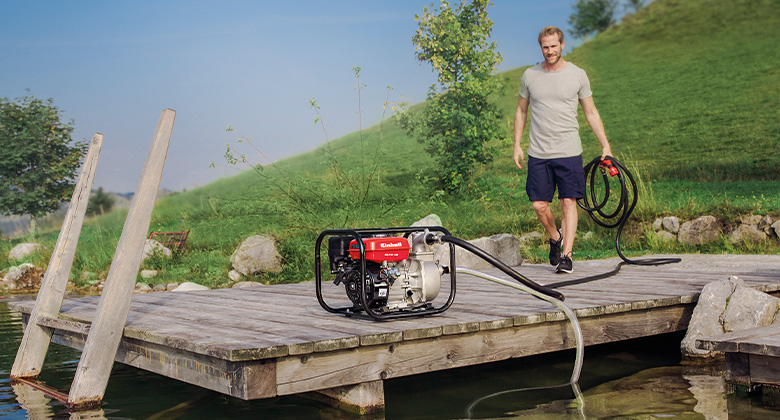
Want to pump more water in less time? With an Einhell petrol water pump, no problem! The four-stroke petrol engine delivers sufficient power even for larger flow rates and can move up to 23,000 litres of water per hour. Our petrol-powered water pumps can generally provide discharge heads of up to 28 metres. With a large enough petrol tank, the petrol-powered water pumps are ready anywhere, any time to pump large quantities of water from A to B as quickly as possible. This makes the pumps ideal for pumping out flooded basements quickly, for example.
Depending on the application, there are different types of water pumps on the market. Factors such as flow rate and discharge head play a role, but so does the type of water to be pumped. If you want to pump out wastewater, you should consider the presence of particles such as sand, mud and stones in the water. Here we have put together a brief overview of the most important aspects when it comes to water pumps.
The biggest distinction between different types of water pumps can be made based on where they are used: Pumps that are placed in the water in order to pump it out are called submersible pumps. Pumps that are used out of the water, e.g. in your garden, and move water from a reservoir by means of a hose, come under the general category of surface pumps. The terms "suction head" and "immersion depth" are important for the operation of your pump. With surface pumps, we talk about suction head or, in other words, the maximum difference in height (say 8 meters, for example) between the surface of the water and the inlet of the garden pump. For submersible pumps, we refer to immersion depth. This indicates the maximum possible difference in height between the surface of the water and the pump at the bottom of your swimming pool, pond, etc. Einhell submersible pumps have maximum immersion depth of up to 20 metres, depending on the model. In short, the difference is that surface pumps generate more pressure and thus transport the water with larger discharge heads of up to 50 meters. The main strength of submersible pumps, on the other hand, is their high flow rates, meaning they can pump many litres of water per hour.
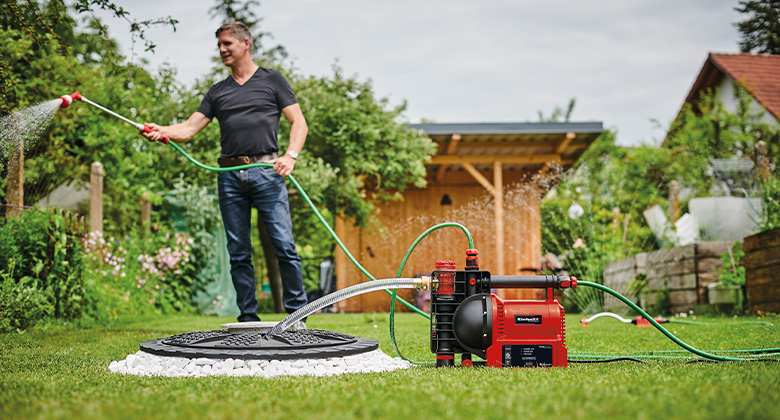
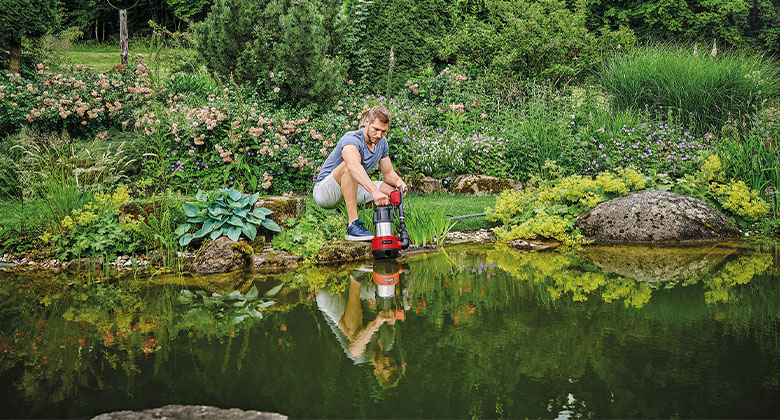
The most important technical characteristics of a water pump are its flow rate and its discharge head. These tell you how much water the pump can move and what height difference it can handle. The flow rate indicates how much liquid a pump can displace over a certain period of time, and is usually given in litres per hour. The discharge head is the maximum height (usually in meters) over which the water can be pumped. The discharge head and discharge pressure are always directly related: The higher the head, the higher the pressure must be to pump the water over the required height. If the height is, for example, 37 meters, it must be pumped with a discharge pressure of 3.7 bar. At 10 meters, 1 bar is sufficient.
For submersible pumps, it is particularly important to distinguish between pumps designed for clear water and dirty water. The term dirty water covers any water that has been contaminated by consumption, i.e. is no longer clear. Water which contains solids such as sand, soil or leaves is also classified as dirty water. In such cases, different sizes of dirt particles can be present. We then refer the grain size, or foreign body size. Drinking water, or clear water, in contrast to dirty water, refers to water that has not been used and is considered clean. In the garden, this might include pool water, well water and rainwater collected in rain barrels or cisterns, for example.
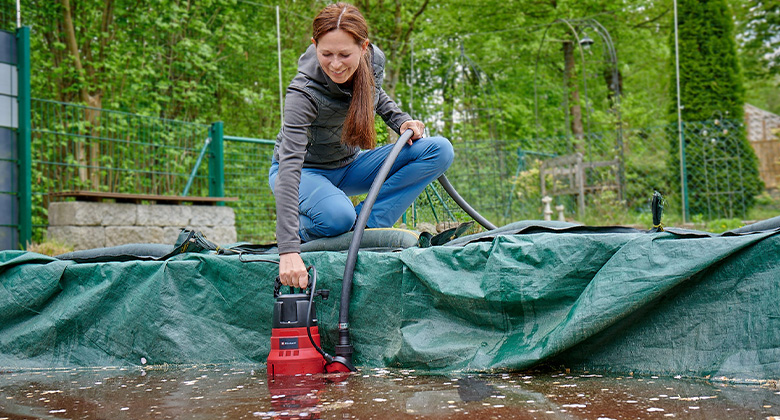
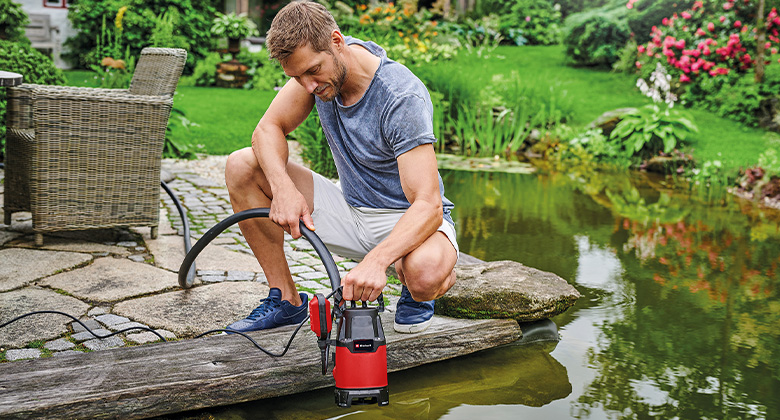
Depending on the type of pump, there are different times and different ways in which the pump starts up. Submersible pumps usually have an internal or external float switch or an AquaSensor. This switch or sensor enables the pump to detect the water level and automatically switch itself on and off, according to the limits that have been set for suction head and start level. Surface pumps that are outside of the water, such as garden pumps or domestic water systems, are equipped with either an on/off switch or a pressure switch that automatically detects when water is requested and switches the pump on accordingly. Submersible pressure pumps and deep well pumps also use pressure switches.
In the blog, our gardening experts explain what you need to look out for when working with a water pump.

In this article, we explain how to properly maintain, clean and connect your pump.
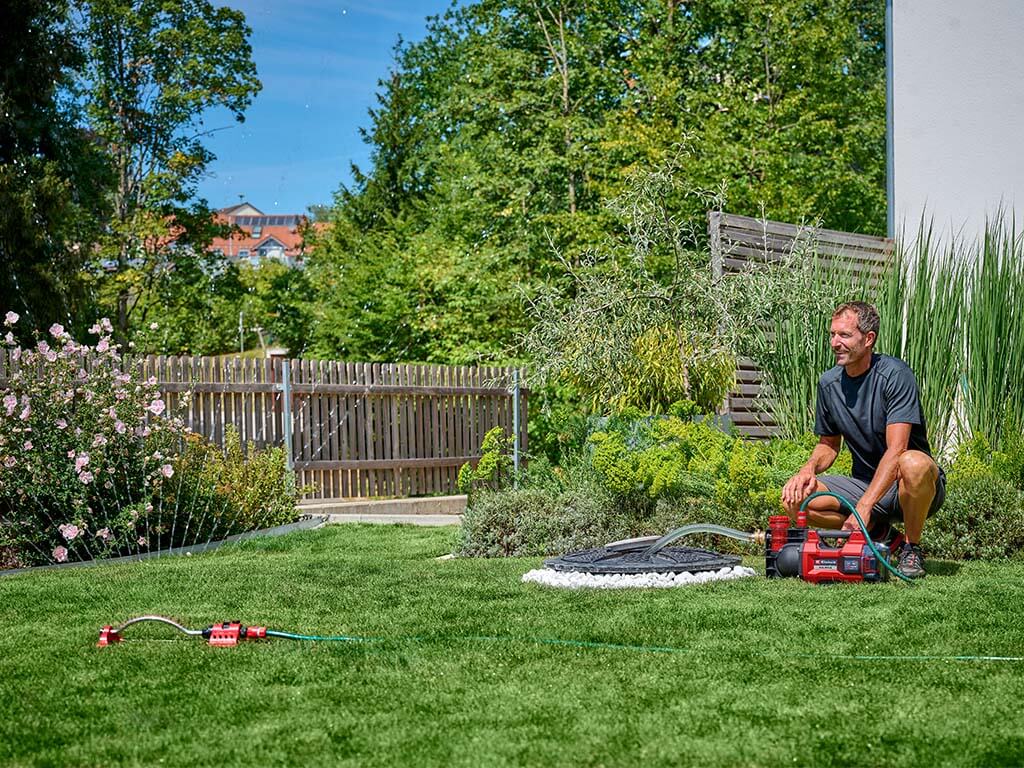
Save drinking water, use rainwater: We give tips on garden watering and more
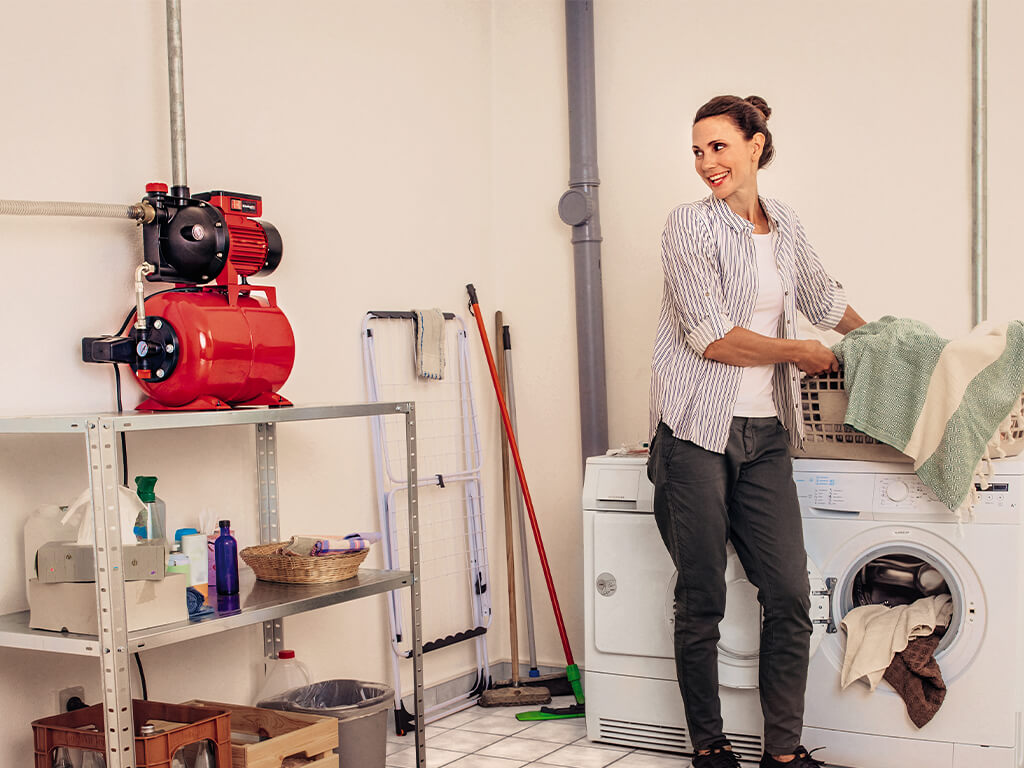
Here you can learn all about the function and features of the Einhell domestic waterworks!
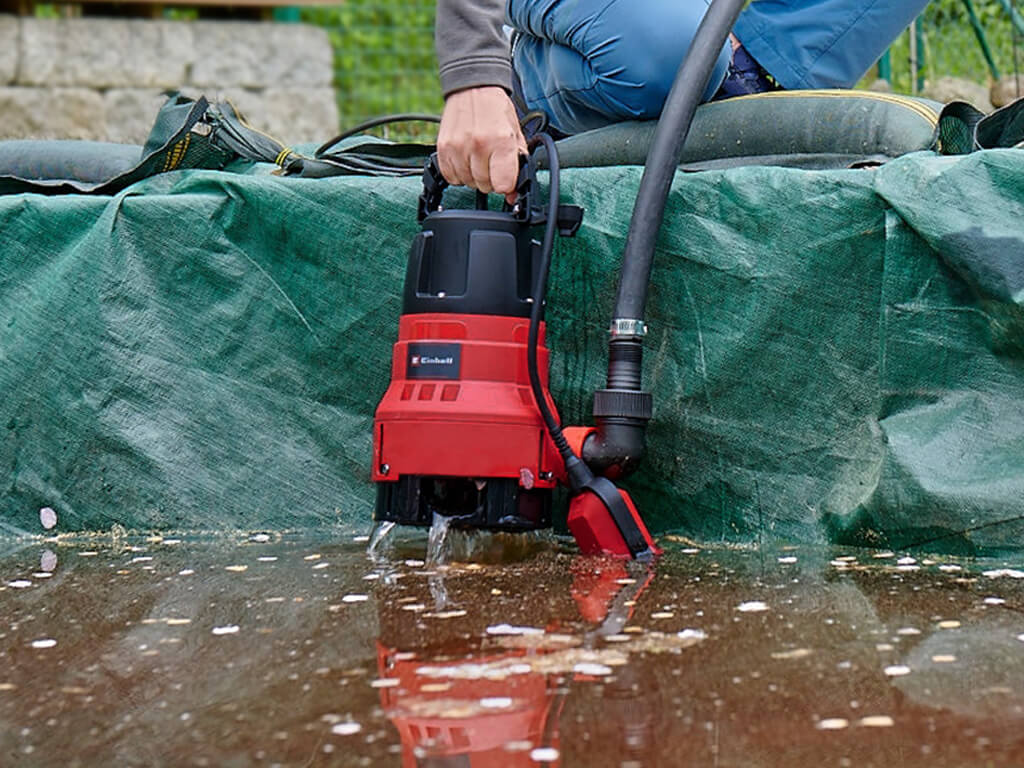
Water in the basement and fallen trees: With these Einhell devices you are well equipped.
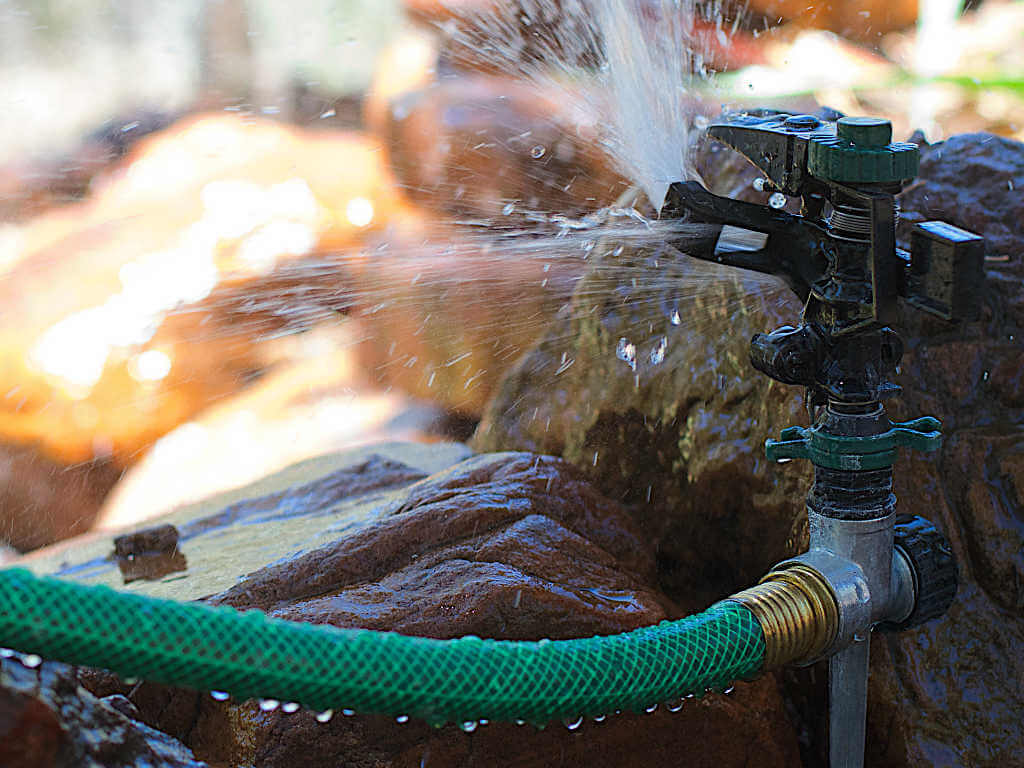
In Part 1 of the guide "watering the garden", we’ve already covered the topics, possibilities of…
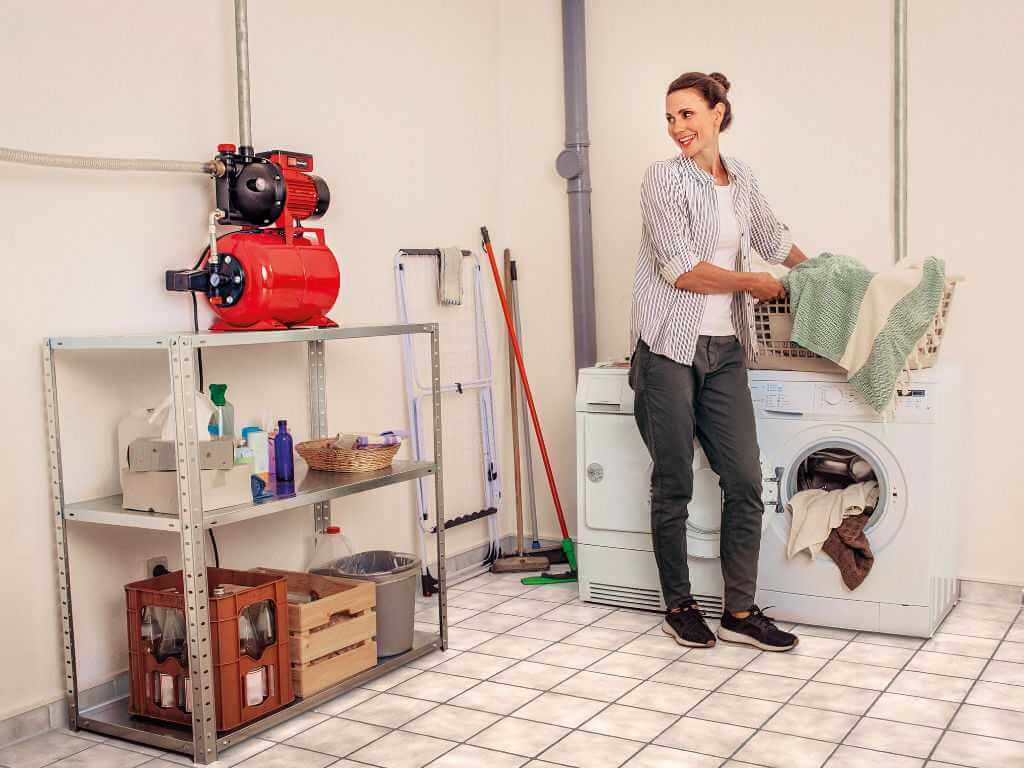
Domestic waterworks are devices that can be used for a wide range of applications and consists of a…

In the summer you have to think watering your garden on a daily basis. Today in the Einhell blog you…
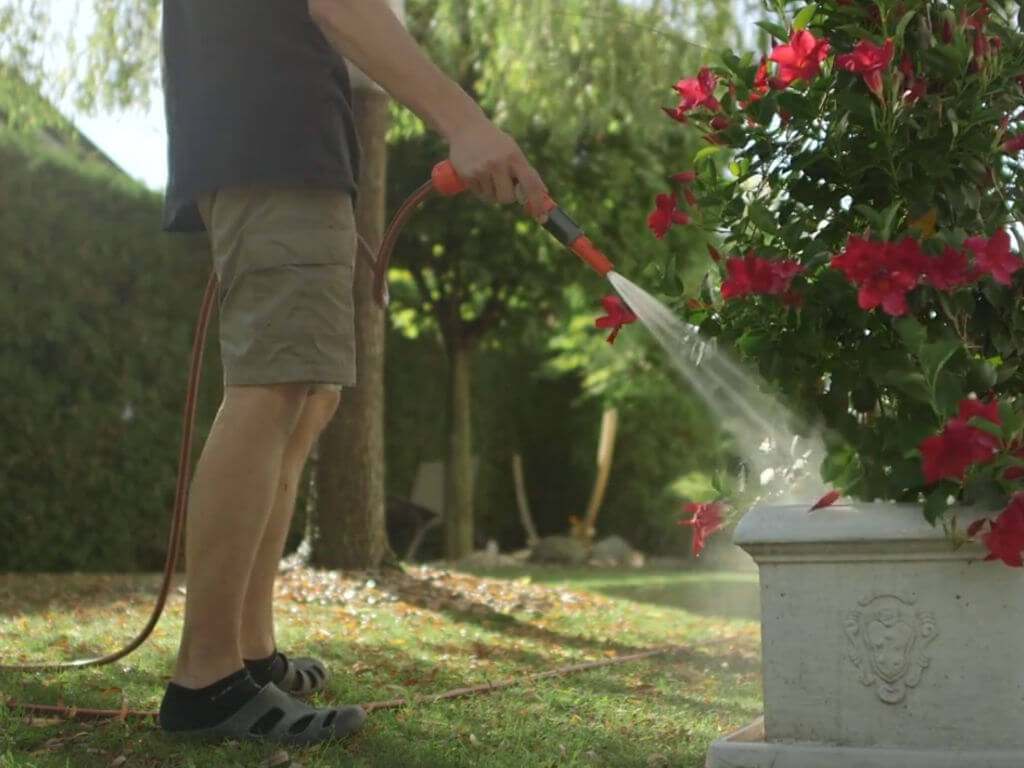
Every time it rains, the roofs of our houses can collect thousands of litres of clean water, which…